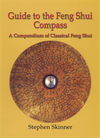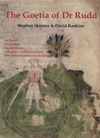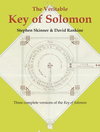Solomon's Keys: Revealing the Origins of Modern Ritual Practices

The Key of Solomon is well known as a grimoire or medieval book of magick, yet its influence on the development of modern magickal practices is largely ignored. What many people do not realize is that the Key of Solomon is in fact a large family of more than one hundred and forty manuscripts containing a range of material, which unite the traditions of Jewish Kabbalistic magick with ancient Greek magick. This synergy produced a collection of techniques that have become the bedrock of most modern magickal and pagan ritual practices.
The Key of Solomon could be considered the first magick primer, being full of all the techniques needed by the magician to create a magick circle, prepare tools and robes, work out propitious times, prayers for preparation, conjurations of the angels, instructions on how to make the pentacles for achieving desired results, and preparing a personal book recording all of this. This is further emphasized by the style of the text, which is concise and explanatory throughout, as this example from the chapter entitled "What are the most fitting Times and Places for the Operations of the Great Art" demonstrates:
"Your attention span is very important and it is essential to maintain if you wish to work without any distraction. For this reason, it [the procedure] demands that you should be in a secluded location, far from any noise or the troubles of the world. Because the essence of Spirits and other Celestial Intelligences contain in part some of the nature of God, so they will appear to us and talk to us more willingly in the stillness of lonely places."
The fact that there are so many manuscripts of the Key of Solomon spread across Europe in nine different languages (these being Czech, Dutch, English, French, German, Greek, Hebrew, Italian, and Latin) suggests it was the first book an aspiring magician would have acquired. This explains why all the subsequent grimoires, all of which exist as manuscripts in low numbers (fewer than ten copies) either leave out or only briefly cover all of the preparatory material found in the Key of Solomon—because the magician would be expected to already know it!
Significantly, the Key of Solomon was a text that was widely available to practitioners of magick, both "high" and "low" varieties, including the practitioners of folk magick such as the English and Welsh cunning folk, Italian witches and monks, European aristocrats, and many others. A major trade in magickal manuscripts occurred over the centuries, a dangerous occupation when it was for a work like the Key of Solomon, which had been banned by the Catholic Church. The Italian witch Laura Malipiero was arrested in Venice in 1654 for selling copies of manuscripts, with the Key of Solomon being specifically named in the charges against her.
- The Creation of a Ritual Space
The creation of a ritual space precedes most pagan and magickal ceremonies, usually through the consecration of salt and water and the casting of a magick circle. The words used in the exorcism of the water and the benediction of the salt in Wiccan practice are derived directly from those used for the preparation of the ritual bath in the Key of Solomon, as is the practice of sprinkling the salt water on the ground prior to a ceremony.
The Athame
Many of the tools used in modern rituals may be found together in the Key of Solomon centuries ago. The sword, Athame (or black-handled knife), white-handled knife, and wand are all used by the Solomonic magician, with descriptions for their form and consecration that have continued into modern practices. The modern esoteric scholar Joseph Peterson has traced the origins of the word "athame" to one of the French manuscripts of the Key of Solomon, with other manuscripts showing a range of alternative spellings, including arthame, arthane, and artave; English spellings of arthanus and arthany; and the Latin spelling of artavus, meaning "penknife." The symbols carved on the hilt of the Athame in Wicca are taken straight from the Key of Solomon, as is its consecration and use in creating the magick circle:"Having chosen a place for preparing and constructing the Circle, and all things necessary being prepared for the perfection of the Operations, take thou the Sickle or Scimitar of Art and stick it into the centre of the place where the Circle is to be made; then take a cord of nine feet in length, fasten one end thereof unto the Sickle and with the other end trace out the circumference of the Circle, which may be marked either with the Sword or with the Knife with the Black hilt. Then within the Circle mark out four regions, namely, towards the East, West, South, and North, wherein place Symbols."
- The Magick Circle
The Wiccan magick circle was originally based on the one recorded by the British witch Gerald Gardner in his novel High Magic's Aid (1949). Gardner's image was based on the one given in the Mathers edition of the Key of Solomon (1889). The magick circle shown in High Magic's Aid is the same one that Gardner had in the Witchcraft Museum in Castletown, in the Isle of Man, as illustrated in photographs from the time that have been reproduced in books such as Doreen Valiente's The Rebirth of Witchcraft. This circle had a number of changes made to the divine names used around it from the one in the Key of Solomon. In recent decades this magick circle has been largely superseded by the more simple practice of using a cord to mark the circle, or simply by visualizing it. Nevertheless, salt and water are still frequently used for the creation of the ritual space, as are the Athame, sword, or wand used in the casting, so the preparations retain the original Solomonic flavor. - Cakes & Wine
The Key of Solomon contains a reference to what is now called Cakes & Wine, in the context of offerings to spirits rather than as a Eucharist. The chapter entitled "oncerning Sacrifices to the Spirits, and How They Should Be Made" says:"But when we make sacrifices of food and drink, everything necessary should be prepared without the Circle, and the meats should be covered with some fine clean cloth, and also have a clean white cloth spread beneath them; with new bread and good and sparkling wine."
- Book of Shadows
Even in this modern age of computers, it is still common practice to copy out magickal material by hand. Many Wiccans copy the Book of Shadows by hand, and likewise ceremonial magicians from orders such as the Golden Dawn often hand-copy their ritual instructions. This personal connection to the effective practices used by the magician or witch can be found in the Key of Solomon, which in the chapter entitled "The Consecration of the Book" instructs the practitioner to, "Make a small Book containing the Prayers for all the Operations, the Names of the Angels in the form of Litanies, their Seals and Characters."
Finally, I would like to end with a quote from the introductory chapter of the Key of Solomon, which introduces the well-known phrase "properly prepared" amongst some very sound advice:
"Therefore, O my son! Thou mayest see every experiment of mine or of others, and let everything be properly prepared for them, as thou shalt see properly set down by me, both day and hour, and all things necessary; for without this there will be but falsehood and vanity in this my work; where are hidden all secrets and mysteries which can be performed…"
Related Products



is subject to certain Terms and Conditions